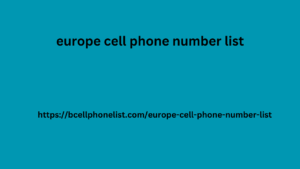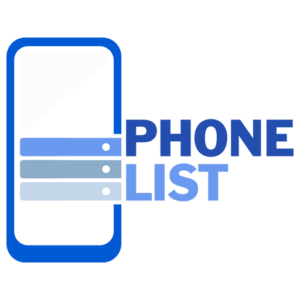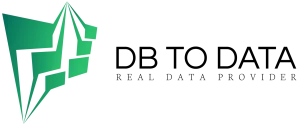In the 1930s, Japanese violinist Shinichi Suzuki felt the need to create a new method of teaching musical instruments to children. The intuition was to strengthen the relationship between student – teacher – parents . Since then, the teaching system has spread throughout the world and is still expanding.
Image 1 – Suzuki | EA Blog
The logo for the world convention. An image that communicates to young and old
The world needs teachers.
A lectern, or rather two
Giving a soul to objects is something that children understand and, hopefully, adults too. Two lecterns have been stylized, one large and one small, leaning towards each other in a complicit, affectionate and respectful attitude.
Image 2 – Suzuki | EA Blog
A freehand sign for instruments played with the hands
To underline the “didactic intimacy” of musical teaching, a “drawn” sign was chosen that recalls the creative manual skill, essential for making any instrument sound worthily.
A super-declined and “gadgetized” brand identity
Any world convention requires a powerful apparatus of communication tools where logo and content can be displayed. A brand identity that is expressed through institutional graphics, signage, advertising, web and gadgets. Posters, billboards, banners, t-shirts, caps, watches, videos and websites. A friendly brand that is a pleasure to find again and perhaps gives a sense of belonging.
Img 3 – Suzuki | EA Blog When a brand creates empathy it speaks to all targets and lasts over time
From convention to academy to institute. Brands in motion
In parallel, a new logo was created for the Italian Suzuki Institute . A stylization of a child that is an integral part of a violin clef. Childhood in a harmonious and dynamic relationship with music. The institute’s activity, in addition to providing an information service on initiatives and educational activities, presents a very lively editorial activity . On some covers , the logo, in an enlarged and single-color version, acts as a background to titles and illustrations, as a decorative element and continuity of the brand identity .
The Alì Bevilacqua studio, specialized in integrated services in the field of civil rights, wanted to renew its brand identity .
A name – brand, that is, a logotype , must have personality, fluency and a graphic characterization that makes it recognizable as a whole, without the need to “reread” it in its perception.
Logo – Ali Bevilacqua | EA Blog
Logo lettering: a question of spaces In this specific case, between the “L” and the “A” with normal spacing there would have been a gap that would have risked breaking the perception of the word in two. A sort of interlocking between the two letters was created so that the full-empty ratio was balanced .
Minimal cut and counter-trend colors
Antique pink and yellow ochre (and a small part in black) give the logo an original and enveloping vibration , which is also a tribute to the central nucleus of the firm, all female.
The Ecuador Mobile Database is a useful tool for businesses trying to put effective digital marketing strategies into action. Like fax lists, mobile databases offer useful data about user behavior and interests, making it possible to create tailored europe cell phone number list advertisements that appeal to potential customers. Our company specializes in providing large amounts of mobile data, including B2B and B2C information, that are tailored to specific business needs.
Corporate image – Ali Bevilacqua | EA Blog
Corporate image, an essential set of effective tools
Even though times hong kong phone number resource have changed (and print runs in the printing house too) the development of a coordinated image must be planned with the utmost care. We always travel around the classic “corporate” materials . The letterhead must buy leads be able to be printed even in a “home” way, so it is better to avoid watermarks and full-page graphics because they would come out deprived of those 4 / 5 millimeters of edge, on the sheet that comes out of the printers normally used in an office.
Alternate print runs for the other materials except for the most transversal of all: the business card . Perhaps the most indispensable paper presentation tool of all. A true classic where the hierarchy of information requires the utmost care and knowledge of the rules of communication.
Speed, essentiality and compactness for an immediately usable website When a brand creates empathy it speaks to all targets and lasts over time
If we add the rapid updateability we complete the equipment of the single-page site . All responsive , perfectly usable from various devices.
Each page must respond to a need and perform a specific function . It must guide the user in performing certain actions: continue browsing to a certain service, download content, sign up for your newsletter, share a page, buy products in your online store, subscribe to a service on promotion, contact you, etc.
2. Guided tour
Golden rule: make sure your visitor doesn’t leave the site, offer him navigation paths between the pages, lead him by the hand through Call to Action , links between pages, buttons, in the direction that is most strategic for you. Each page must not be an end in itself, but offer your visitor solutions and paths to continue his buyer journey . The visit to your site must not be a wandering, but a significant and purposeful experience .
3. Usability (User experience)
Today, the user is increasingly impatient and intolerant of waiting times, errors, and unintuitive steps. Every extra step or stumble can be a reason for abandonment.
“If you don’t work out, I’d rather not waste time and immediately look for someone better than you.”
The experience that the user has on your site conveys a perception of your identity and the quality of your services/products.
So put yourself in your visitor’s shoes: try to use your site , check if it is really easy (and pleasant) to navigate, if the actions you suggest are fluid and the feedback is sufficient.
A very useful practice, in addition to testing your site personally, is to do a usability test on a sample of external subjects (colleagues, friends, collaborators…): what is logical and obvious for us is not always so for others.
In light of the discoveries you make, be sure to periodically optimize your site. And don’t forget about mobile devices, today it is essential to create a website that works perfectly on smartphones!
4. How Google Likes It
Is your site SEO friendly ? That is, does it appear in search results when a user searches for keywords or phrases related to what you offer?
SEO means creating relevant, up-to-date and easy-to-use valuable content that search engines index and correctly associate with user searches.
SEO involves several aspects of the site:
Search engines really like and reward the fact that your site is a coming and going of traffic and interactions.
Want to increase traffic to your website?
Download our SEO Guide!
5. The target is real people
A very common mistake is to adopt personal words and communication styles, far from the characteristics and sensibilities of your interlocutor. For example, if you sell insurance packages, perhaps you could discredit your credibility by using too informal language, or on the contrary, if you sell online courses for a target of young freelancers, a tone of voice that is too stiff might not be appropriate.
Tone of voice is a non-trivial obstacle to overcome because it requires a great effort of empathy and identification. It is necessary to identify your target with great clarity: not in general, but specifically. For this reason, it is useful to identify one or more buyer personas – with a name, a face and a story – to always keep in mind when you find yourself writing content for your site and for your communication in general.
6. Use your customers’ words
Halfway between the topic of tone of voice and that of SEO is the choice of words with which you communicate: the greatest risk is that of running into sector-specific terminology, for insiders… words that ordinary people and your potential client may not even know exist.
To do this, it is always worth the effort of empathy… but there are also many effective tools to identify the keywords or phrases (long tails) that people use to search (for example SEMrush or Ubersuggest).
7. Keep the dialogue open
It’s trivial, but when you focus on content, communication of your offer and your story, don’t forget to clearly explain the possibility of contacting you: a menu item, clear forms, encouraging Call to Action .
Possibly also a pop up chat… but don’t overdo it, users don’t like intrusiveness. And if you decide to use this tool, remember that you must be ready and willing to respond quickly (almost instantly, I would say): if you don’t have the possibility, give up. A missed or late response would cause a stumble in the user experience, creating frustration and distrust in your interlocutor.







